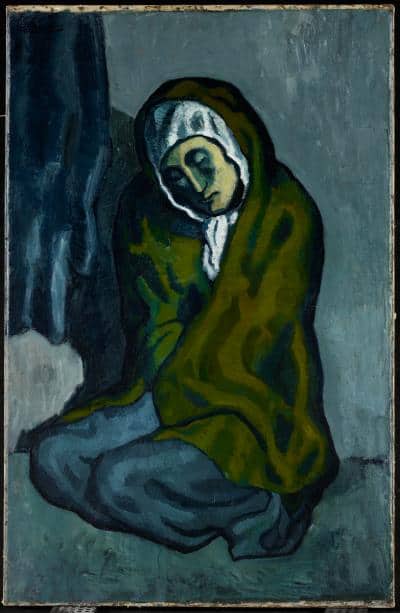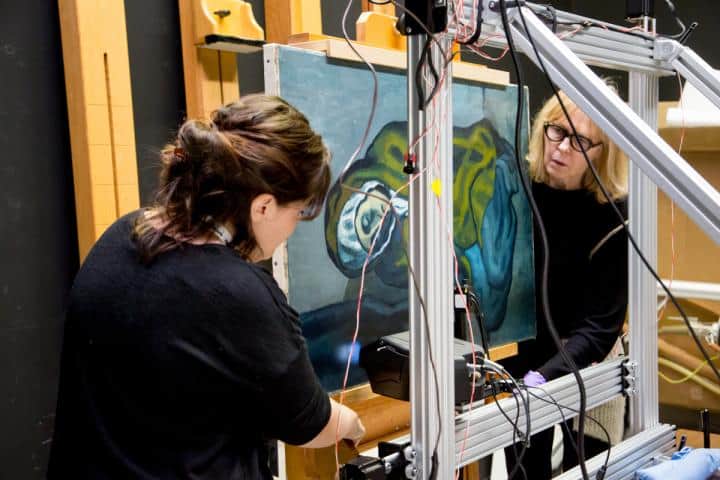Non-invasive imaging techniques developed at Northwestern University near Chicago has revealed that Pablo Picasso probably used another artist’s work as the basis for a piece painted in 1902 during the Spanish artist’s so-called Blue Period, before his art took a radical turn away from realism.
As part of a partnership with the Art Gallery of Ontario (AGO) in Toronto, which owns the painting, Mark Walton, research professor of materials science and engineering, studied "La Miséreuse accroupie" (The Crouching Woman) after one of the gallery’s conservation staff noticed colour peeking through cracks in the painting surface.

After this initial observation, the gallery first used x-rays to study the picture. This revealed that if the painting was turned through 90°, a landscape would become visible. John Delaney, senior imaging scientist at the National Gallery of Art in Washington, DC then studied the painting with infrared reflectance hyperspectral imaging.
This revealed that Picasso had changed the composition of the painting after his initial repositioning and repainting of the original landscape. After this, the Northwestern University/Art Institute of Chicago Centre for Scientific Studies in the Arts (NU-ACCESS) travelled to the AGO with a portable x-ray fluorescence scanner, a device which shows the distribution of elements associated with pigments in the painting. Mark Walton presented the results of these studies at the American Association for the Advancement of Science annual meeting in Austin, Texas.

The scanner showed that the surface layer of the painting contains iron and chromium-based pigments, mostly iron-based Prussian blue and ultramarine, which Picasso is known to have used at this time, and chromium-based yellow greens.
However, it also revealed cadmium and lead-based pigments below the visible surface, representing an earlier painting of the woman’s right arm and hand. It also confirmed that the original painting was a landscape, probably by another Barcelona artist, and that Picasso incorporated some of the landscape forms into his final composition; the woman’s back, for example, includes lines that originally represented cliff edges.
"Picasso had no qualms about changing things during the painting process," Walton said. "Our international team - consisting of scientists, a curator and a conservator - has begun to tease apart the complexity of 'La Miséreuse accroupie,' uncovering subtle changes made by Picasso as he worked toward his final vision."
Sandra Webster-Cook, AGO's senior conservator of paintings, added "We now are able to develop a chronology within the painting structure to tell a story about the artist's developing style and possible influences."




Glasgow trial explores AR cues for autonomous road safety
They've ploughed into a few vulnerable road users in the past. Making that less likely will make it spectacularly easy to stop the traffic for...